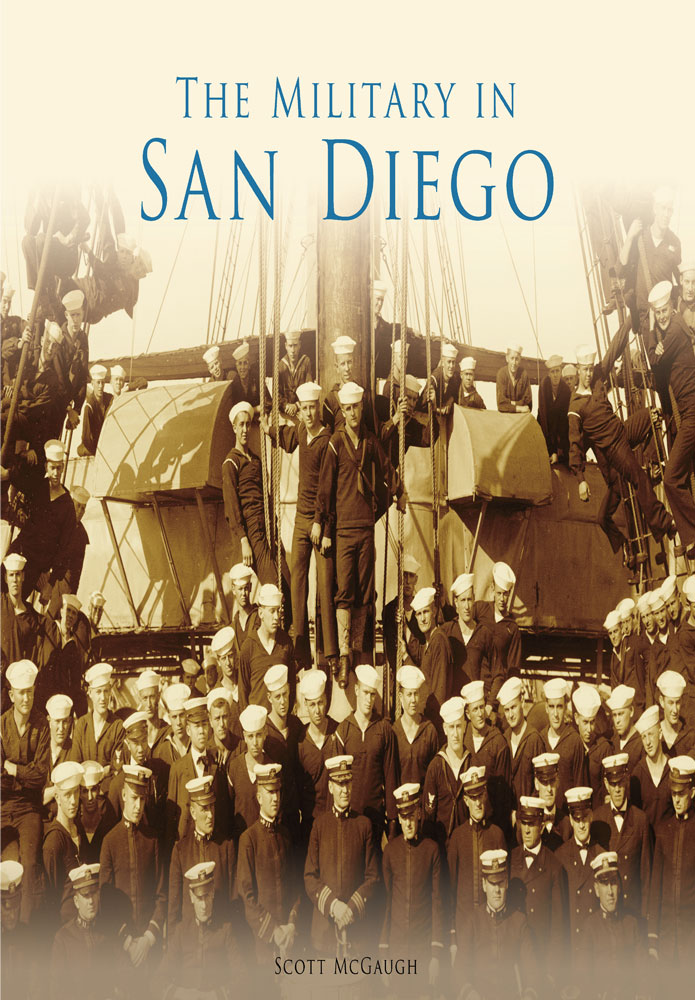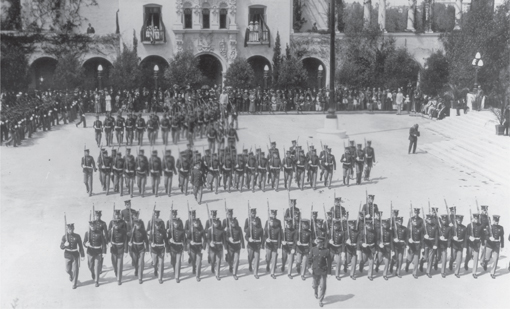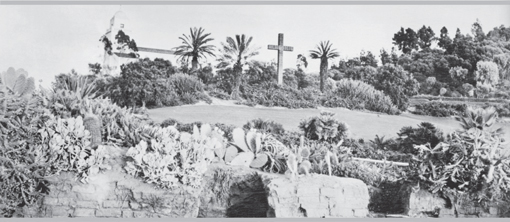
THE MILITARY IN
SAN DIEGO
ON THE FRONT COVER: The crew of the USS Bennington poses for a photograph prior to a disastrous shipboard explosion in San Diego Bay. (San Diego History Center.)
ON THE BACK COVER: World War II pilot cadets man their aircraft for training flights over San Diego. (San Diego History Center.)
THE MILITARY IN
SAN DIEGO

Copyright 2014 by Scott McGaugh
ISBN 978-1-4671-3156-8
Ebook ISBN 9781439642658
Published by Arcadia Publishing
Charleston, South Carolina
Library of Congress Control Number: 2013951092
For all general information, please contact Arcadia Publishing:
Telephone 843-853-2070
Fax 843-853-0044
E-mail
For customer service and orders:
Toll-Free 1-888-313-2665
Visit us on the Internet at www.arcadiapublishing.com
To those who serve America in uniform and all who support them.
CONTENTS
ACKNOWLEDGMENTS
A wide range of historians, military professionals, civic leaders, and volunteers dedicated to preserving the legacy of the military in San Diego made this book possible. Rudy Shappee provided vital baseline research at the outset. Bruce Linder, executive director of the Coronado Historical Association, and the USS Midway Museums ship historian, Karl Zingheim, patiently proofed the manuscript. Lauren Rasmussen, Chris Travers, Carol Meyers, and Natalie Fiocre at the San Diego History Center provided indispensable access to a treasure trove of photography that forms the bulk of this book. Other photography donors included Ann Dakis and Tom LaPuzza of Space & Naval Warfare Systems, San Diego; Stephanie Venn-Watson and Mark Xitco of the US Navy Marine Mammal Program; and Andre Sobocinski of the US Navys Bureau of Medicine and Surgery. Katrina Pescador, Debbie Seracini, and Alan Renga at the San Diego Air & Space Museum were especially accommodating, as was Kevin Sheehan of the Maritime Museum of San Diego. Elisa Leonelli, Faye Johnson, and Jan Kocian graciously provided photographs. Others, including Scott Sutherland and Sonja Hansen, were helpful as well. Unless otherwise noted, all images appear courtesy of the San Diego History Center.
INTRODUCTION
The history of the San Diego region is inextricably interwoven with the history of the US military. Over the course of five generations, this symbiotic relationship, which predated the birth of the nation, is one in which most San Diegans take a great deal of pride.
More than 200 years ago, the Spanish recognized the value of San Diego as a strategic military foothold on the West Coast. When California became a province of the United States in the mid-1800s, the nation quickly recognized San Diegos strategic position, with the area first being used as border protection. Then, as America turned its attention to the Far East, San Diego became even more relevant. City leaders worked with Congress and President Roosevelt in the mid-1900s, successfully advocating a military metropolis that eventually evolved into the San Diego region of today. Beginning with the arrival of the Great White Fleet in 1908, the military has been woven into the fabric of the regions fate.
As the armed services evolved in the 20th century, San Diego matured as well. The military presence spawned massive migrations of military personnel and civilians to the region, requiring vast expansions of housing, schools, public services, education, and health care. From welders to engineers, much of San Diegos labor force has been fueled by the employment needs of the military. Similarly, as technology evolved, San Diegos economic base has reflected shifts from aircraft manufacturing to military and defense space technology. San Diegos robust innovation sector, from high tech to biotech, as well as its world-class academic institutions, has been nurtured by billions of dollars in military research and defense (R&D) funding that has flowed into this region.
Today, military spending in the region is approximately $20 billion annually, the majority of which supports approximately 130,000 jobs. In addition, more than an estimated 300,000 civilians support the militarys presence.
The relationship between the military and San Diego goes far deeper than the gross regional product. It speaks to the tens of thousands of Americans who depart from San Diegos shores every year in service to their country. It is reflected by military housing complexes throughout the region, where the children of civilians and those in uniform attend the same schools. Further, it is not just an active duty military community. San Diego is home to the third-largest population of veterans in the United States; 1 in 12 employees is a veteran, and 1 in 6 businesses is owned by a veteran.
Over the years, San Diego has evolved from a remote Spanish presidio outpost to a Pacific powerhouse and has become home to the largest Navy complex in the world. Worldwide commands of US Navy Special Forces, its surface fleet of ships, and all air wings are headquartered in San Diego.
Looking ahead, San Diego will continue to lead the nation in military/civilian stewardship and will continue to flourish as a community through its long-standing relationship with the armed forces of the United States.
Charlotte Cagan
Executive Director
San Diego History Center

While San Diego may be internationally recognized today for its intimate relationship with the US Navy, the historical roots of its relationship with the military were first seeded by the US Army. Then nearly half a century later, the Army established the first substantial military aviation presence in the region. As national priorities and world affairs evolved, the Navy gradually became dominant. Here, marines conduct a marching demonstration for the public in 1915. Today, San Diegos relationship with the military spans not only the Navy, but also includes a vast array of military R&D institutions and alliances.
ONE
THE CHANGING GUARD
17691907
Over the course of the first 150 years of its history, San Diegos relationship with a local military presence underwent a number of changes. In 1769, the Spanish established the first military outpost to protect a nearby mission as well as to deter exploring sea captains from claiming territorial ownership for their kings and queens.
Spanish military influence continued until the conclusion of the Mexican-American War in 1848. Navy sailors captured San Diego at the beginning of the war, constructed a small fort of logs and earthen embankments, and named it Fort Stockton.
The subsequent Army-dominated period saw an increased military presence. Point Loma was recognized for its military value, and San Diego grew as a port of entry for supplies destined for the regions mostly Army outposts. In the latter half of the 1800s, the focus shifted to improving regional infrastructure to support a more diversified military presence. A river had to be relocated, and the bay had to be dredged.
By 1907, San Diego had matured from Spanish outpost of occupation, to a permanent Army foothold, to increasing Navy interest. This formed the backdrop for what would become the dominating local emergence of the US Navy.

Next page












